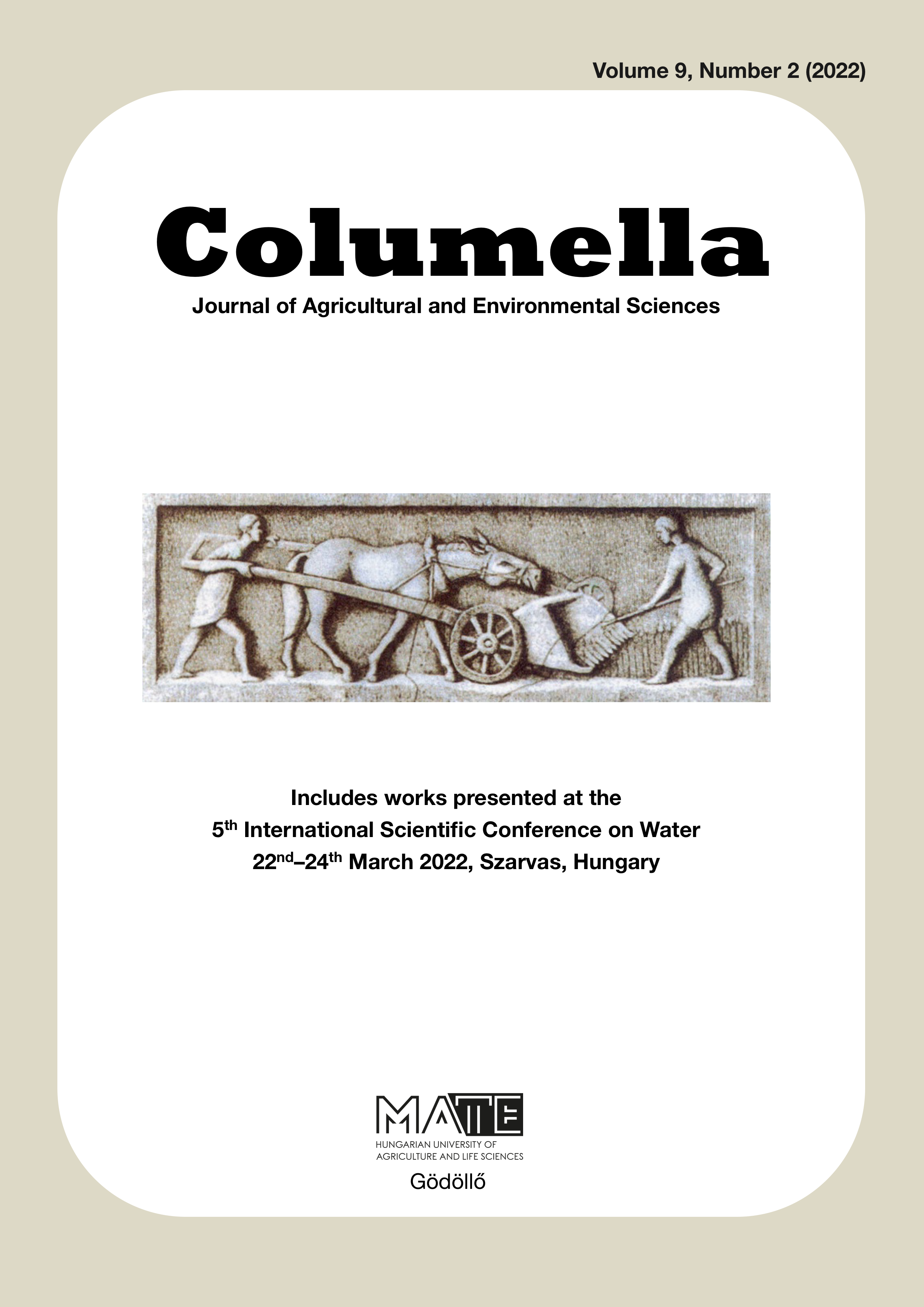Marginal note on wastewater recycling margins from the perspective of simultanism of sustainability and technological development
DOI:
https://doi.org/10.18380/SZIE.COLUM.2022.9.2.135Keywords:
water, wastewater, utilization technology, possibilitiesAbstract
The main feature of our time is the "duality": we demand livable environment, on the other hand we use it in an
unsustainable way to ensure the overflowing comfort of welfare societies. As a result, the use of the environment
– namely the environmental elements and their systems, processes and structures – has now led to overloading
(pollution, damage). So the state of our habitats, reflects our actions, there is no doubt about that. That is, our
activity is an imprint of our thinking. Changing/modification requires innovations that facilitate the development
and application of the embedded technologies of the future, building on the intersubjectivity of individuals.
One of the cornerstones of the European Green Deal is that "economic growth should be decoupled from
resource use". Among our resources, the water – especially drinking water – is a scarce commodity. However,
with prudence, care and ingenuity, we can do a lot to reduce the amount of wastewater.
Our short paper demonstrates, through an example of wastewater recyclability, that increasing volumes are no
longer just a problem to solve. Rather, it is a challenge, and technological development offers a way out of its
trap, so that the society does not have to face the negative effects of declining water supply.
References
Bhatia, R. K., Sakhuja, D., Mundhe, S., & Walia, A. (2020). Renewable Energy Products through Bioremediation of Wastewater. Sustainability 12(18), 7501. doi: https://doi.org/10.3390/su12187501
European Commission. (2019). A European Green Deal: Striving to be the first climate-neutral continent. Retrieved 01.02.2022, from https://ec.europa.eu/info/strategy/priorities-2019-2024/european-green-deal_en
European Parliament and the Council. (2020). Regulation (EU) 2020/741 of the European Parliament and of the Council of 25 May 2020 on minimum requirements for wa- ter reuse. Retrieved 01.02.2022, from https://eur-lex.europa.eu/legal-content/EN/TXT/PDF/?uri=CELEX:32020R0741&from=EN
Gole, V. L., & Priya, A. (2017). Microwave-photocatalyzed assisted degradation of brilliant green dye: A batch to continuous approach. Journal of Water Process Engineering 19(1), 101-105. doi: https://doi.org/10.1016/j.jwpe.2017.07.009
Hong, S. M., Park, J. K., & Lee, Y. (2004). Mechanisms of microwave irradiation involved in the destruction of fecal coliforms from biosolids. Water Research 38(6), 1615-1625. doi: https://doi.org/10.1016/j.watres.2003.12.011
Koch, K., Helmreich, B., & Drewes, J. E. (2015). Co-digestion of food waste in municipal wastewater treatment plants: Effect of different mixtures on methane yield and hydrolysis rate constant. Applied Energy 137(1), 250-255. doi: https://doi.org/10.1016/j.apenergy.2014.10.025
Kovács, P., Beszédes, S., Ludányi, L., Hodúr, C., & Szabó, G. (2012). Development of a continuous flow microwave toroidal cavity resonator. In 11th International Scientific Conference MMA 2012: Advanced Production Technologies (p. 357-360). Novi Sad, Serbia.
Leonelli, C., & Mason, T. J. (2010). Microwave and ultrasonic processing: Now a realistic option for industry. Chemical Engineering and Processing: Process Intensification 49(9), 885-900. doi: https://doi.org/10.1016/j.cep.2010.05.006
Meda, A., Lensch, D., Schaum, C., Cornel, P., Lazarova, V., & Choo, K. (2012). Energy and water: Relations and recovery potential. In V. Lazarova, K. Choo, & P. Cornel (Eds.), Water– Energy Interactions in Water Reuse (pp. 21–35). London, UK: International Water Association, IWA Publishing.
Mosier, N., Wyman, C., Dale, B., Elander, R., Lee, Y., Holtzapple, M., & Ladisch, M. (2005). Features of promising technologies for pretreatment of lignocellulosic biomass. Bioresource Technology 96(6), 673-686. doi: https://doi.org/10.1016/j.biortech.2004.06.025
Pavlostathis, S. G., & Giraldo-Gomez, E. (1991). Kinetics of Anaerobic Treatment. Water Science and Technology 24(8), 35–59. doi: https://doi.org/10.2166/wst.1991.0217
Sun, Y., & Cheng, J. (2002). Hydrolysis of lignocellulosic materials for ethanol production: a review. Bioresource Technology 83(1), 1-11. doi: https://doi.org/10.1016/S0960-8524(01)00212-7
Tyagi, V. K., & Lo, S.-L. (2013). Microwave irradiation: A sustainable way for sludge treatment and resource recovery. Renewable and Sustainable Energy Reviews 18(1), 288-305. doi: https://doi.org/10.1016/j.rser.2012.10.032
UN-Water. (2022a). World Water Day 2022: Groundwater. Retrieved 06.12.2022, from https://www.unwater.org/world-water-day-2022-groundwater/
UN-Water. (2022b). World Water Day 2022 Groundwater - Making The Invisible Visible. Retrieved 22.02.2022., from https://www.worldwaterday.org/
UNDP. (2022). Goal 6 Clean Water and Sanitation. Retrieved 22.02.2022., from https:// www.undp.org/sustainable-development-goals#clean-water-and-sanitation
UNESCO World Water Assessment Programme. (2017). The United Nations world water development report, 2017: Wastewater: the untapped resource. Paris, France: UNESCO.
WISE Freshwater. (2022). Hungary. Retrieved 01.02.2022, from https://water.europa.eu/freshwater/countries/uwwt/hungary
Yu, Q., Lei, H., Li, Z., Li, H., Chen, K., Zhang, X., & Liang, R. (2010). Physical and chemical properties of waste-activated sludge after microwave treatment. Water Research 44(9), 2841-2849. doi: https://doi.org/10.1016/j.watres.2009.11.057
Downloads
Published
Issue
Section
License
Copyright (c) 2022 Róbertné Kovács, Valeria Nagy, Chao-Tang Wang

This work is licensed under a Creative Commons Attribution-NonCommercial-NoDerivatives 4.0 International License.






